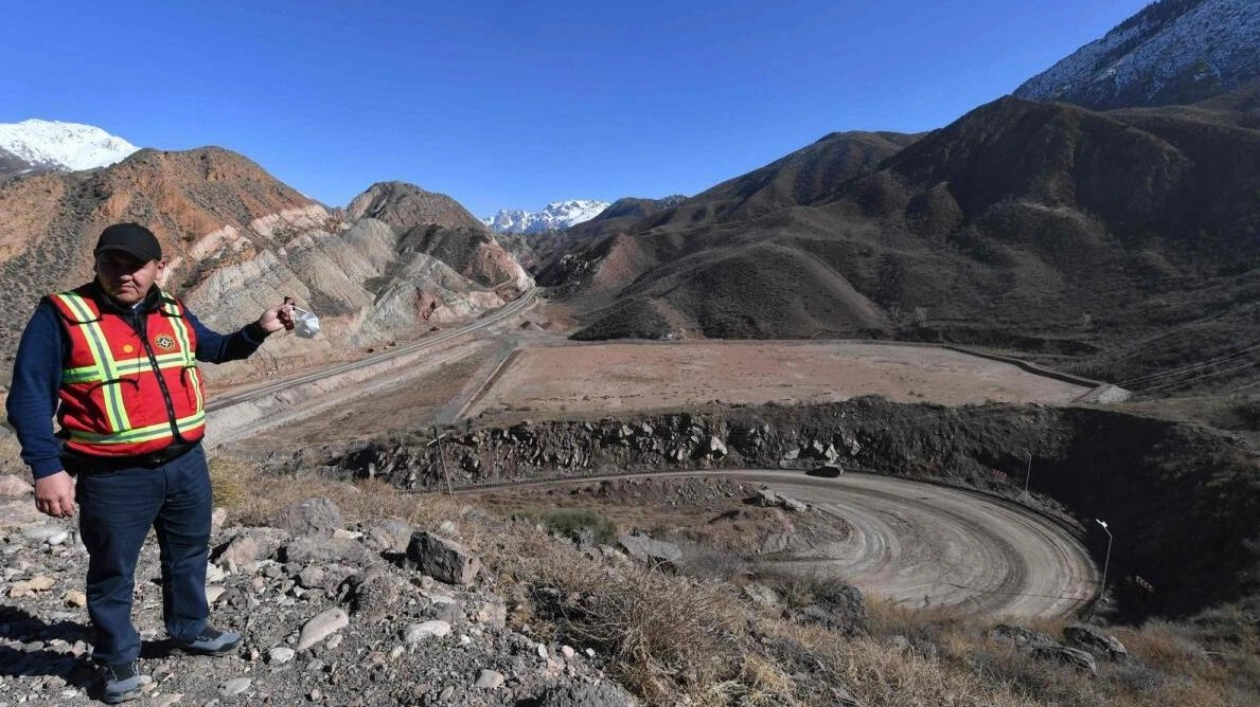Bakytbek Asankulov, a Kyrgyz emergency situations ministry employee responsible for radioactive security, stands near the new 'Dalneye' tailings dump as disposal work continues on Soviet-era radioactive nuclear waste in the town of Min-Kush. – AFP file
Ermek Murataliyev, wearing a mask and hazmat suit, drives a truck loaded with Soviet-era radioactive waste along the winding mountain roads of Kyrgyzstan. His mission is perilous: two such trucks crashed into ravines over the summer. Drivers in this former Soviet Central Asian state are prohibited from stopping until they reach their final destination—a storage zone where the waste will be buried under layers of compacted clay and rock. Murataliyev underwent a medical inspection and must have regular health checks to qualify for the job. 'I have been trained on how to keep myself safe,' he said.
Three decades after independence, Kyrgyzstan is still grappling with the aftermath of the Cold War nuclear arms race, during which Central Asia supplied the Soviet Union with all its uranium. Kyrgyz authorities report that there are now six million cubic meters of radioactive waste at 30 sites like Min-Kush, requiring complex and costly disposal measures. 'When the Soviet Union collapsed, Kyrgyzstan lacked the equipment and funds to transfer the waste to safe sites,' said Ilgiz Ernis, deputy mayor of the Min-Kush municipality. 'The process was significantly delayed,' he added. The disposal work is now nearing completion, with involvement from Russian nuclear giant Rosatom, the European Union, and the European Bank for Reconstruction and Development. Local resident Aiman Kishkenalina noted, 'This problem is not just for Min-Kush but for all of Kyrgyzstan.'
Kishkenalina is one of around 5,600 residents of the dilapidated uranium mining town—a ticking time bomb with severe human and environmental implications. 'Some experts with dosimeters found that the radiation level was too high in some places,' she said. Local officials claim it is up to six times higher than the norm. Radioactive waste has also been detected in the river running through Min-Kush, which flows into the Syr Darya, the region's second-largest river, potentially endangering up to 80 million people. 'The radioactive content of the water passing under the disposal area exceeds acceptable norms,' said Bakytbek Asankulov, in charge of radioactive security at the Kyrgyz emergency situations ministry. Asankulov also cautioned about the risk of landslides, where natural disasters exacerbated by climate change are becoming more frequent. He warned that a landslide triggered by bad weather or the country's frequent earthquakes could block the river, 'creating a radioactive lake.' If the water from such a lake were to burst out, it 'would reach the Fergana Valley'—the most densely populated part of Central Asia where Kyrgyzstan, Tajikistan, and Uzbekistan converge.
Authorities' warnings not to drink contaminated water from the river are ignored by some locals. 'We eat the livestock and drink the milk of cows that have drunk the water,' said Perizat Berdaliyeva, a retired former accountant at the uranium mine. Health risks from radiation were concealed during Soviet times, but unlike many other parts of the Communist bloc, atomic industry towns like Min-Kush did not suffer food shortages. 'Everything was available,' Berdaliyeva recalled. Scientific studies have revealed an abnormal prevalence of illnesses such as cancer and weakened immune systems among people living near nuclear waste sites. 'My two daughters' hair is falling out. They are often sick. My husband gets nose bleeds,' said Nazgul Zarylbek, 25. Her house was recently demolished by authorities due to radiation contamination. She received 5,000 euros ($5,300) in compensation and was relocated to a different part of Min-Kush.
Situated in a picturesque valley at an altitude of 2,000 meters (6,500 feet), Min-Kush could seem relatively normal were it not for the electronic display outside the mayor's office showing current radiation levels. The town in central Kyrgyzstan aims to move past its toxic past, with local officials even envisioning tourism potential. 'The transfer of uranium waste to a safer area will allow Min-Kush to be removed from the red list for tourism,' said deputy mayor Ernis.
Source link: https://www.khaleejtimes.com






